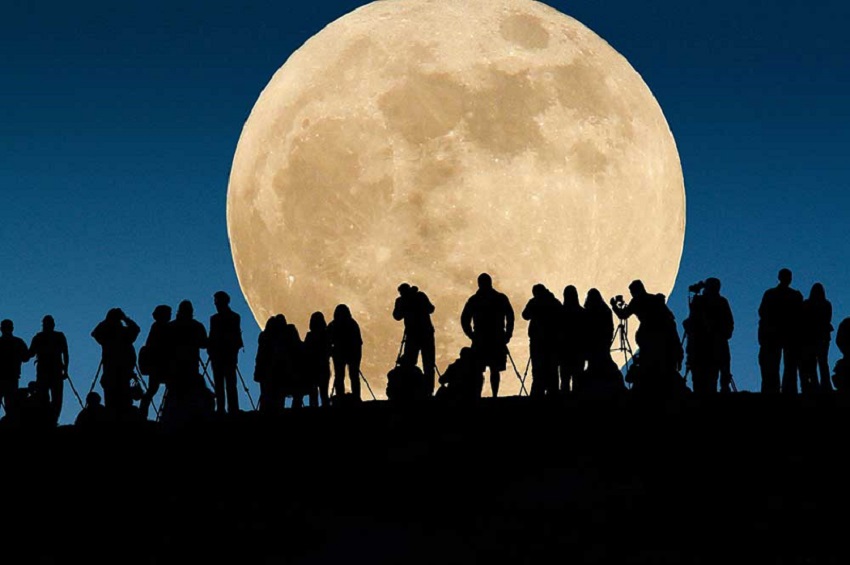
The Sunday News

 A supermoon occurs when a full moon coincides with the moon reaching perigee (the moon’s closest point of orbit to Earth).
A supermoon occurs when a full moon coincides with the moon reaching perigee (the moon’s closest point of orbit to Earth).Skywatchers in Zimbabwe will be treated to a rare and spectacular “supermoon” on Monday, 14 November when the moon will be big and at its brightest point in a once in 60 years phenomenon.
Renowned physicist and enthusiastic member of the Astronomy Society of Harare, Dr Francis Podmore told Zimpapers Syndication on Friday that this phenomenon commonly known as a “supermoon or a “perigee full moon” occurs when a full moon coincides with the moon being at its closest to the Earth on its orbit.
“It can be watched anywhere on the planet and it will be visible anywhere including here in Zimbabwe,” he says.
“It’s fascinating and it will be in the sky all night.”
The event which will be viewed across the globe is classed as a ‘super-moon’ – when the moon is at its closest approach to the Earth also known as a perigee.
“The blue moon will be exceptionally large and bright. So long as the sky is clear of clouds, it should provide sky gazers with a rare treat,” says the physicist.
“It’s quite interesting and I hope it will be clear for all to see. “
Put simple, says Dr Podmore: “The moon’s orbit around the Earth is not circular but slightly elliptical – slightly squashed. All this means the distance of the moon from the earth will vary. So when the moon is closest to the earth, it will look larger in the sky.
“So it’s like a plane coming to land – it starts off small and gets bigger when it is about to land. It’s just like all other full moons but its percentage different.”
Astronomers and other weather experts only fear rain clouds could block out the spectacle.
Observers say at 8:09pm GMT, the moon will pass by the earth at a distance of 356 511km – the closest it has passed the Earth since 1948.
“As it does so, it will be a full moon, making it a particularly big super-moon,” wrote one observer in an online publication.
Supermoons are roughly 30 percent larger in area and 30 percent brighter than the smallest full moons – full moons that happen when the moon is at its furthest distance from Earth: at “apogee”. In terms of diameter – the width of the moon – it will be about 14 percent wider than the smallest full moons.
“The difference between this unusually big supermoon and other supermoons – like the ones you could have seen on 16 October or you could see on 14 December – is negligible.”
Observers and astronomers say this year; the full moons of October, November and December all take place when the moon is at its closest point of approach in its orbit around Earth.
October’s supermoon occurred on October 16 while November’s full beaver moon will reach the peak of its full phase on November 14, but it will appear full to the casual observer in the day before and after the main event.
According to a NASA statement, it is the second of three consecutive super moon full moons for 2016.
This full moon will be not only the closest and brightest super moon of 2016 but also the largest since 1948, Bob Berman, an astronomer at the Slooh Community Observatory, told an online space publication.
NASA observers say the full moon won’t come this close to earth again until November 25, 2034.
In addition, observers further point out that a full moon occurs each month when the sun, earth and moon line up, with the moon on the side of the Earth opposite to the sun.
The term “supermoon” is used to describe a full moon at its perigee – the point in the moon’s orbit when it is closest to Earth, causing it to appear up to 14 percent bigger and 30 percent brighter in the sky, NASA officials said in the statement.
In September this year, Zimbabwe experienced a partial solar eclipse around 9:40am for a second consecutive year.
Observers say a solar eclipse occurs when the moon passes the earth and the sun totally or partially obscuring the earth’s view of the sun.
In 2001 and 2002, the southern African country experienced a total solar eclipse which attracted thousands of tourists to the country.
A full spectacle was enjoyed by people in Beitbridge, Kezi and Plumtree in Matabeleland South.
Other areas that include Bulawayo, Chiredzi, Victoria Falls, Hwange, Gwanda and West Nicholson had a were covered between 98 percent and 99,6 percent while the capital, Harare, was covered 89,2 percent.
Dr Podmore could not hide his excitement about the super moon.
“It’s quite fascinating and I’m very keen on anything that can promote people’s interest and understanding of astronomy here in Zimbabwe,” he says.
“Interest in astronomy is growing and more and more are taking interest.” – Zimpapers Syndication



